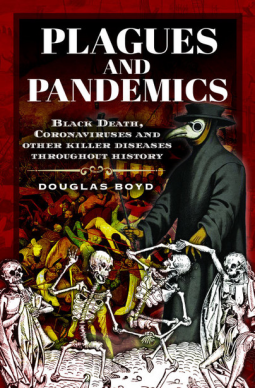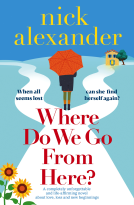
Plagues and Pandemics
Black Death, Coronaviruses and Other Killer Diseases Throughout History
by Douglas Boyd
This title was previously available on NetGalley and is now archived.
Send NetGalley books directly to your Kindle or Kindle app
1
To read on a Kindle or Kindle app, please add kindle@netgalley.com as an approved email address to receive files in your Amazon account. Click here for step-by-step instructions.
2
Also find your Kindle email address within your Amazon account, and enter it here.
Pub Date 30 Nov 2021 | Archive Date 7 Dec 2021
Pen & Sword | Pen & Sword History
Talking about this book? Use #PlaguesandPandemics #NetGalley. More hashtag tips!
Description
All you need for a plague to go pandemic are population clusters and travellers spreading the bacterial or viral pathogens. Many prehistoric civilisations died fast, leaving cities undamaged to mystify archeologists. Plague in Athens killed 30% of the population 430-426 BCE. When Roman Emperor Justinian I caught bubonic plague in 541 CE, contemporary historian Procopius described his symptoms: fever, delirium and buboes – large black swellings of the lymphatic glands in the groin, under the arms and behind the ears. That bubonic plague killed 25 million people around the Mediterranean. Later dubbed Black Death, it killed 50 million people 1346-1353, returning to London 40 times in the next 300 years. The third bubonic plague pandemic started 1894 in China, claiming 15 million lives, largely in Asia, before dying down in the 1950s after visiting San Francisco and New York. But it also hit Madagascar in 2014, and the Congo and Peru. The cause, yersinia pestis was identified in 1894. Infected fleas from rats on merchant ships were blamed for spreading it, but Porton Down scientists have a worrying explanation why the plague spread so fast.
Any disease can go epidemic. Everyday European infections brought to the Americas by Cortes’ conquistadores killed millions of the natives, whose posthumous revenge was the syphilis the Spaniards brought back to Europe. The mis-named Spanish ’flu, brought from Kansas to Europe by US troops in 1918 caused more than 50 million deaths. Fifty years later, H3N2 ’flu from Hong Kong killed more than a million people.
One coronavirus produces the common cold, for which neither vaccine nor cure has been found, despite the loss of millions of working days each year. That other coronavirus, Covid-19 was NOT the worst pandemic. Chillingly, historian Douglas Boyd lists many other sub-microscopic killers still waiting for tourism and trade to bring them to us.
Available Editions
| EDITION | Hardcover |
| ISBN | 9781399005180 |
| PRICE | £20.00 (GBP) |


















